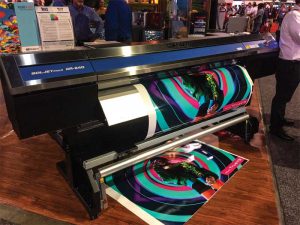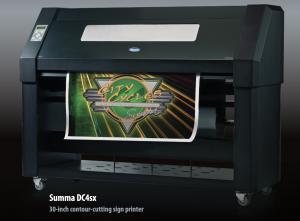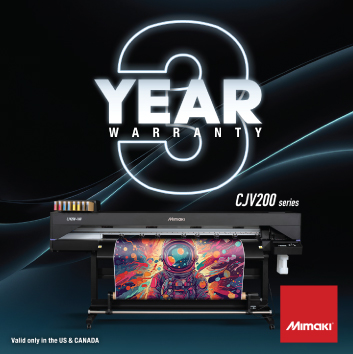Technologies and trends in the print market

Making a decision
A number of decisions need to be made during the process of completing a job. Although media types are typically predetermined by the available digital printing technologies as well as mounting requirements, other factors are not so precise. It is important to consider the following when making a decision:
- Strength of materials: The market offers a number of materials with varying degrees
of strength. These include vinyl banners, tensioned fabrics, composite boards, plywood, first and second surface plastics, aluminum, and steel. Most of these products are suitable for indoor and outdoor use. - Location: If the application is to be placed outdoors, the finished product must be able to withstand the elements (e.g. sunlight, wind, rain, and snow). Durable print types include solvent, latex, and UV. Depending how long an application will be outside generally determines if the product requires lamination, which further protects against moisture and fading. Lamination films are available in rolls and run from ultra-clear to frosted. They can be applied as cold or hot laminates.
New substrates
Recent technological developments have created an entirely new set of products and capabilities within the wide-format printing market. Substrates are ever-expanding; the next generation of substrates includes:
- Polypropylene: A strong and lightweight alternative to PVC, polypropylene is penetrating banner applications and can reduce weight by more than 60 per cent.
- Textile media: Usually polyester-based, textile media can also be created with natural fabrics like cotton. Textiles are now available in almost every media segment, from canvas to specialty banners and décor.
- Non-PVC media: Many vinyl manufacturers are seeking alternatives to commonly used substrates. Although non-PVC materials have been on the market for a while, additional costs make it challenging for them to compete in this commodity priced market segment.
Alternative ink sets
New wide-format technologies are incomplete without ink sets. Some of the ink sets used in sign graphics applications include:
- Sublimation: Sublimation printing involves a dye transfer printing method. Ink is printed using a digital wide-format printer onto a transfer paper that is usually coated with cellulose or clay. Heat and pressure combined enable the ink to “sublimate,” turning it into gas and driving the colour molecules into the receptive media. This results in a vibrant rendition of the image.
- UV: Although the UV category is becoming crowded, sales continue to increase. Industry research predicts a sales growth of 14 per cent worldwide in the next two years. UV printing technologies offer a number of benefits, including a wide choice of substrates and printing materials.
- Flexible UV: Flexible inks are available for UV-curable printers that use mercury vapour and light-emitting diode (LED) curing lamps. Soft signs and exhibit graphics printed with UV-curable inks usually have a thicker ink layer and can be limited in their application due to their tactile limitations. Polyester-based fabrics can be used in outdoor UV printing applications.
Soft signage applications
A common industry term, soft signage is used to describe digitally printed fabric signage. This term is not limited to a particular ink set, but usually refers to a polyester product; it can also be cotton (natural fibre) or a synthetic fabric. Soft signage is evolving into a range of applications and continues to grow with a variety of ink sets, including UV, aqueous, dye sublimation and disperse, and latex methods.
Retail environments offer a rich opportunity for inkjet printed materials. Of all the applications that are printed today, textile soft signage and digitally printed materials used in retail environments support a strong brand message. It is not uncommon to see chain stores using wind feathers, mesh and woven polyester banners, wallpaper, and other unconventionally printed substrates in their advertising efforts.



